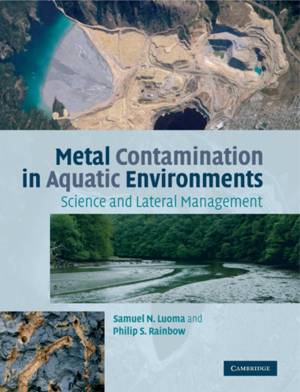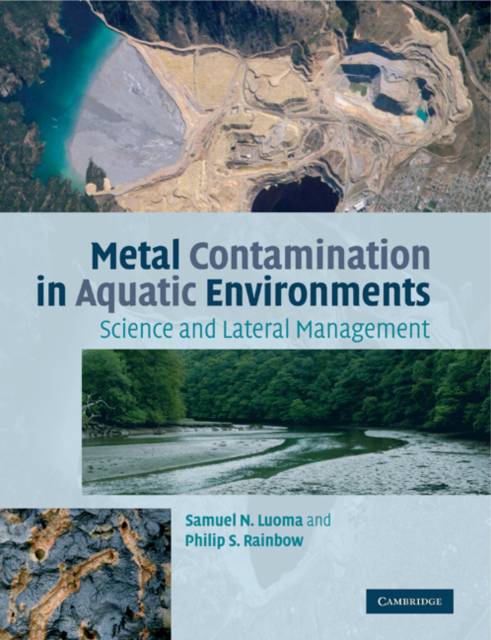
Je cadeautjes zeker op tijd in huis hebben voor de feestdagen? Kom langs in onze winkels en vind het perfecte geschenk!
- Afhalen na 1 uur in een winkel met voorraad
- Gratis thuislevering in België vanaf € 30
- Ruim aanbod met 7 miljoen producten
Je cadeautjes zeker op tijd in huis hebben voor de feestdagen? Kom langs in onze winkels en vind het perfecte geschenk!
- Afhalen na 1 uur in een winkel met voorraad
- Gratis thuislevering in België vanaf € 30
- Ruim aanbod met 7 miljoen producten
Zoeken
Metal Contamination in Aquatic Environments
Science and Lateral Management
Samuel N Luoma, Philip S Rainbow
Paperback | Engels
€ 106,95
+ 213 punten
Omschrijving
Metal contamination is one of the most ubiquitous, persistent and complex environmental issues, encompassing legacies of the past (e.g. abandoned mines) as well as impending, but poorly studied, threats (e.g. metallo-nanomaterials). Writing for graduate students, risk assessors and environmental managers, Drs Luoma and Rainbow explain why controversies exist in managing metal contamination and highlight opportunities for policy solutions stemming from the latest advances in the field. They illustrate how the 'lateral' approach offers opportunities in both science and management, making the case that the advanced state of the science now allows bridging of traditional boundaries in the field (e.g. between field observations and laboratory toxicology). The book has a uniquely international and interdisciplinary perspective, integrating geochemistry, biology, ecology, and toxicology, as well as policy and science. It explicitly shows how science ties into today's regulatory structure, identifying opportunities for more effective risk management in the future.
Specificaties
Betrokkenen
- Auteur(s):
- Uitgeverij:
Inhoud
- Aantal bladzijden:
- 588
- Taal:
- Engels
Eigenschappen
- Productcode (EAN):
- 9780521279017
- Verschijningsdatum:
- 9/06/2011
- Uitvoering:
- Paperback
- Formaat:
- Trade paperback (VS)
- Afmetingen:
- 189 mm x 246 mm
- Gewicht:
- 1034 g

Alleen bij Standaard Boekhandel
+ 213 punten op je klantenkaart van Standaard Boekhandel
Beoordelingen
We publiceren alleen reviews die voldoen aan de voorwaarden voor reviews. Bekijk onze voorwaarden voor reviews.









